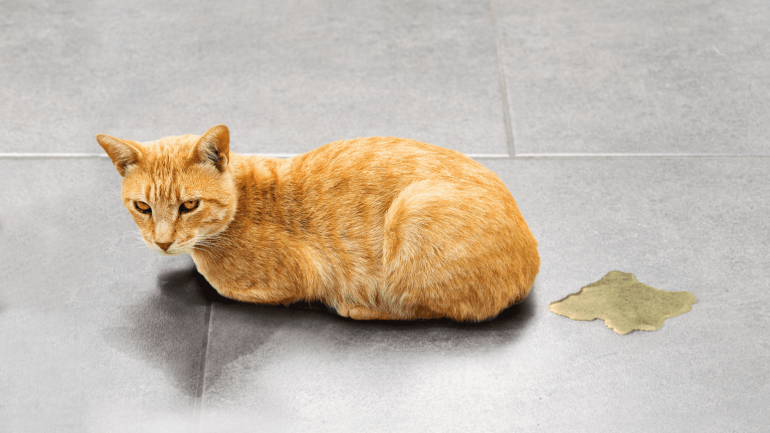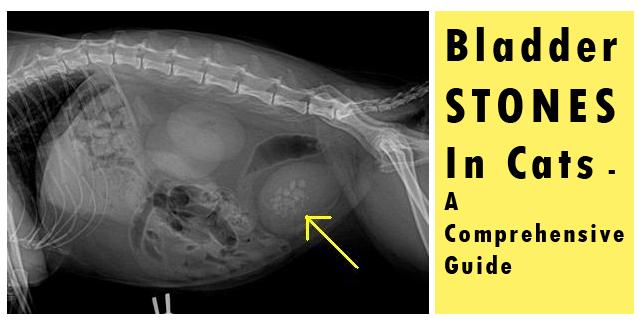Bladder and kidney stones in cats causes, symptoms, and treatment

Bladder and kidney stones
Urinary stones are made of minerals and can form anywhere in the urinary tract of dogs and cats. These stones can irritate the bladder lining and obstruct urine flow from the kidney to the bladder or from the bladder out of the body. Pets with a blockage may be unable to urinate, may strain or vocalise (whimper or yelp) while urinating, or may vomit and seem tired, and should be seen by a vet immediately.
What are bladder and kidney stones?
Mineral deposits in urine that have hardened into kidney and bladder stones. The minerals struvite, calcium oxalate, and urate are frequently involved. Anywhere in the urinary tract, stones can form in dogs and cats. Stones can take on a wide variety of sizes and forms.
Specific types of stones may be more common in specific animal breeds. For example, urate stones are more common among Dalmatians.
Sharp edges on stones have the potential to irritate or lodge themselves in the bladder's lining, thickening and inflaming the surrounding tissue. They may develop inside the kidneys as well.
When stones become lodged in the urethra, which is a small tube that allows urine to exit the body, or the ureters, which are the tiny tubes that connect each kidney to the bladder, they can result in major complications. Urine (and pressure) can accumulate in the kidney when the regular passage of urine from the kidney to the bladder is blocked, which may result in kidney infections or renal failure.
Urine accumulates inside the urinary tract and the pet becomes unable to urinate when a stone obstructs the urethra. Due to their longer and more narrow urethras than female pets, male pets experience this more frequently. When a pet is unable to urinate, it is a medical emergency that needs to be seen by a veterinarian right once.
What causes these stones?
Stones are often caused by an underlying condition that alters the balance of minerals or other substances that are excreted in the urine. Factors that could influence the risk for the formation of stones include:
- Type of food the pet is eating
- Urinary tract infections
- Metabolic diseases
- Genetic predisposition (breed of animal)
-
Dehydration: Insufficient water intake can lead to concentrated urine, which is more prone to crystallization, forming stones.

What are the signs of bladder and kidney stones?
Most stones are found in the bladder. Pets with bladder stones may show no signs at all or may exhibit signs such as the following:
- More frequent urination
- Blood in the urine
- Urinary accidents
- Recurring urinary tract infections
Signs of a possible urinary blockage include:
- Straining to urinate
- Inability to urinate
- Crying in the litterbox
- Vomiting
- Anorexia
- Painful abdomen
- Lethargy (tiredness)
Pets with kidney stones may show no signs or may have persistent blood in the urine. If a blockage affects the kidneys, the pet may have pain near the middle of the spine (where the kidneys are located) or may drink and urinate more.

How will my vet diagnose urinary stones?
With light hand pressure, certain veterinarians may be able to detect stones in the bladder. An abdominal radiograph, or x-ray, is usually necessary. Contrast medium, a sterile solution that looks bright on radiographs, may need to be injected into the urinary system in order to assist make the stones more visible because some stones are not visible on standard radiographs. To see stones, an abdominal ultrasound could be useful.
The pet may exhibit signs of pain and the veterinarian will typically be able to feel a solid bladder if the urethra is blocked by a stone.
Urine testing can be used to detect the presence of a urinary tract infection. Urine may occasionally contain crystals, which can indicate the kind of stone present. Still, sending sample stones to a lab for analysis is the only surefire way to determine the type of stone. This is significant since the type of stone will determine the course of treatment.
How are bladder and kidney stones treated?
In most cases, immediate surgery is needed for pets that have obstructions. Giving your pet a particular food can help dissolve certain stones if they are not obstructed. This meal, which is exclusively sold by veterinarians, will help dissolve the stones and change the pH of the urine.
Treatment Options
-
Dietary Changes: Specialized prescription diets can help dissolve certain types of stones and prevent their recurrence by creating a less favorable environment for stone formation.
-
Hydration: Ensuring your cat has access to fresh, clean water at all times encourages dilute urine, which reduces the risk of stone formation.
-
Medications: Depending on the type of stones and underlying causes, medications might be prescribed to manage pain, prevent infections, or dissolve stones.
-
Surgery: In some cases, especially when stones are too large to pass naturally or are causing severe obstruction, surgical removal might be necessary.
-
Lifestyle Modifications: Regular exercise and a stress-free environment can contribute to overall urinary health.
Some types of stones cannot be dissolved by diet and must be removed from the bladder using other methods, including:
- Voiding urohydropropulsion: While the pet is sedated, small stones may be flushed out by filling the bladder with fluid and applying pressure to empty it (only works for small stones)
- Basket retrieval: A small scope (a long, thin device with a tiny camera) is inserted into the urethra while the animal is under anaesthesia, and stones are found and removed (not possible in male cats)
- Laser lithotripsy: A small scope is inserted into the urethra, and a laser is used to break up the stones into smaller pieces which then may pass through the urethra (not possible in male cats)
- Surgery: The bladder is opened through the abdomen, and the stones are removed
Surgery can remove kidney stones, but the process may impair kidney function. Extracorporeal shock wave lithotripsy is an additional option that is typically restricted to universities. Shock waves are utilized in this operation to break up kidney and ureter stones into small enough pieces to flow through the urine.
Following removal, stones are typically sent to a diagnostic facility for analysis to ascertain their kind and makeup. Pets may require lifelong medication and/or specific nutrition once the content of the stone has been identified through lab investigation in order to assist prevent recurrence.
Conclusion
Bladder and kidney stones in cats can cause significant discomfort, but with timely veterinary care, appropriate treatment, and preventive measures, affected cats can lead happy, healthy lives. Cat owners play a crucial role in monitoring their pets' behavior and seeking veterinary assistance promptly if any symptoms suggestive of urinary issues arise. By working closely with a veterinarian, cat owners can ensure their feline companions receive the best possible care and enjoy a high quality of life.


